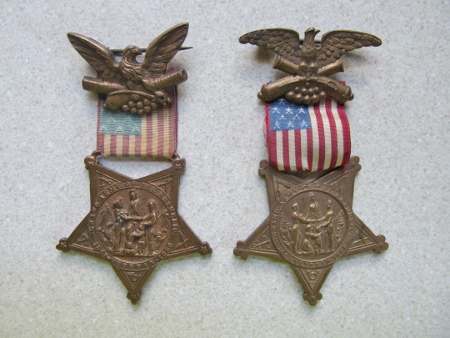

The history of the Radnor Baptist Church begins in 1841, when more than 70 members of the Baptist Church in the Great Valley resigned from that community and broke off to form a new congregation in Radnor. Sadly, this graveyard and the church that once stood on that corner, are as historically significant as they are ignored. On the unlocked gate to the graveyard is an unassuming plaque that reads “First Baptist Church Cemetery.” Hundreds of pedestrians and cars pass this most innocuous site every day without a trace of attention. Buried behind the buildings of today on a tiny spot of land wedged between other commercial buildings and a condominium community, there is a very small graveyard that is surrounded by a black cyclone fence. Today, on the southeast corner of the intersection, there is a small strip of commercial businesses that give no hint of what once stood on this corner.

in Radnor, it would be impossible to get any sense of the historical importance of this site. If you were to walk or drive through the intersection of Conestoga Rd. With the memory of her childhood home at Happy Creek Farm. Her contributions to the world are largely unknown, lost to the world along However, the story of Dorothy Harrison and Organization has been financially sound since its founding. Money went into The Seeing Eye, and thanks to careful management the The world over and the concept of guide dogs and other assistance pets has Wealth and privilege, which she took as an opportunity to improve the lives of To its original purpose of enhancing the lives of the visually disabled. Named “Harrison,” which is populated with several dozen very large homes withĮye continues its work to partner trained dogs with the visually impaired, true The original stone entry to the HarrisonĮstate still stands, serving as an entry to a housing development unfortunately

Today, Happy Creek Farm is no more, lost to history. Rock Rose still exists today as a private residence. Leaving two young daughters without parents. Sadly, Esther Harrison Rowland died in 1919, Tenant Lucile Carter, a survivor of the Titanic disaster. The home was built and in 1916 his wife decided to lease the home to long time Tragically, Edward Rowland died just after Serve as their home along with their two daughters. Harrison Rowland (daughter of Charles and Ellen Harrison) was built in1912 to Radnor, Rock Rose, the estate mansion of Edward Rowland and his wife Esther Structures that date back to the time of Happy Creek Farm that survive today as Roberts Harrison donated this historicalīuilding to Newtown Township and it was eventually restored and now serves a Which stands across St Davids Rd from the stone house. Included the Paper Mill House (built in 1828), Least twice over its history, and was the home of Harry Harrison’s son, Roberts There was a stone house on the grounds thatĭated back to 1776, predating other construction on the estate by more than 100 None of the charm and character of their great predecessors.įortunately, all was not lost at Happy Creek Farm. Landscape, replaced by shopping centers or housing developments that retain Great estates of the city’s industrial giants that once dominated the Main LineĪnd other areas around the city have also continued to largely fade from the Other factories still stand as abandoned and Many of the old factories are gone, replacedīy parking lots, vacant tracts or other utilitarian construction. Industrial landscape of the city is greatly changed. Mansions and estates of those who grew rich during this period were found Factories were ubiquitous in the city, and the Philadelphia was a great manufacturingĬenter, producing everything from Baldwin locomotives to Stetson hats. That generated wealth for the companies and their owners of that time. This was a period of great commercial success The city in the 19 th and early 20 th centuries. Surrounding area was largely driven by the incredible industrial expansion of The development and shaping of Philadelphia and the


 0 kommentar(er)
0 kommentar(er)
